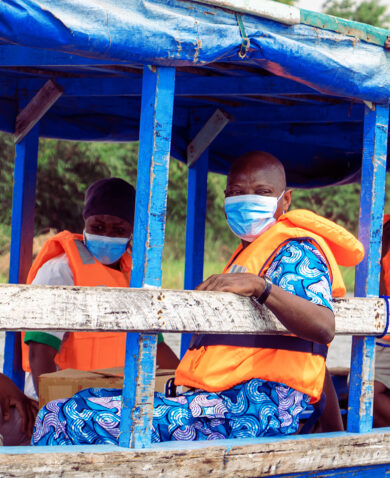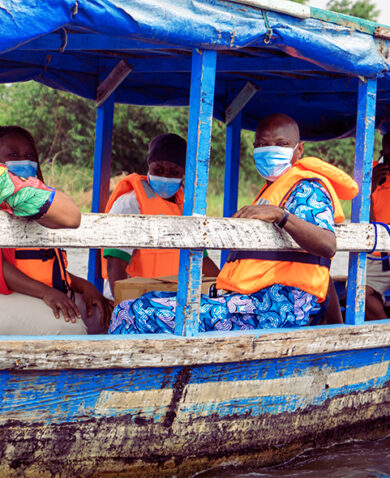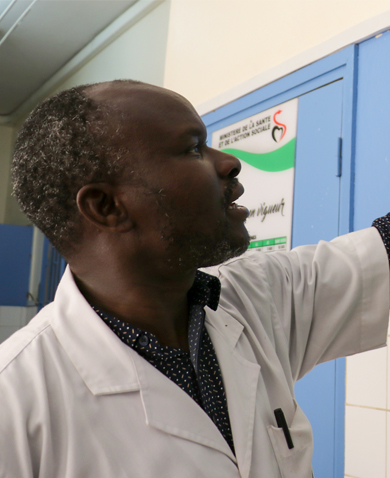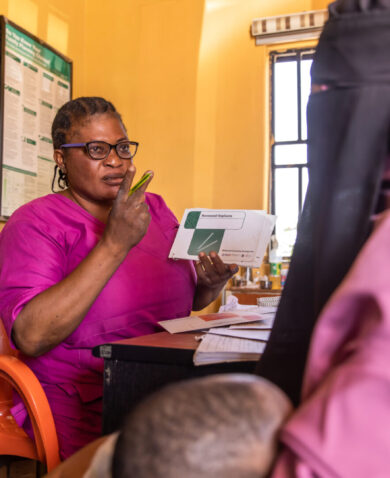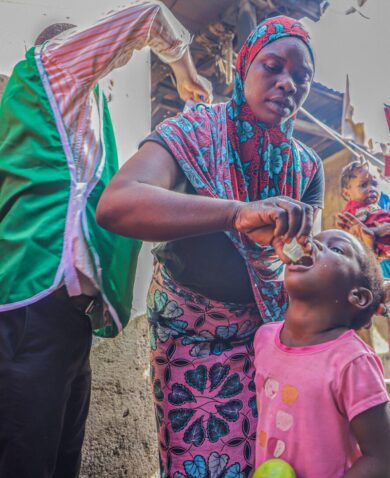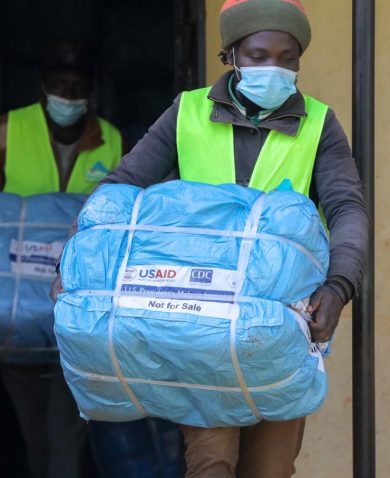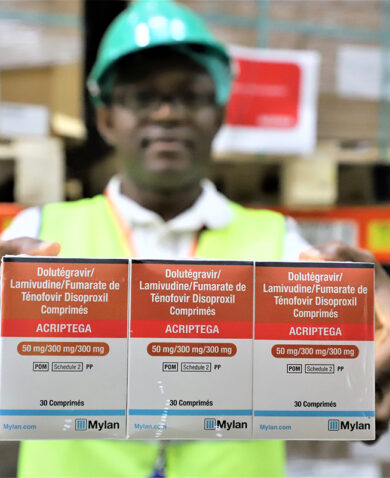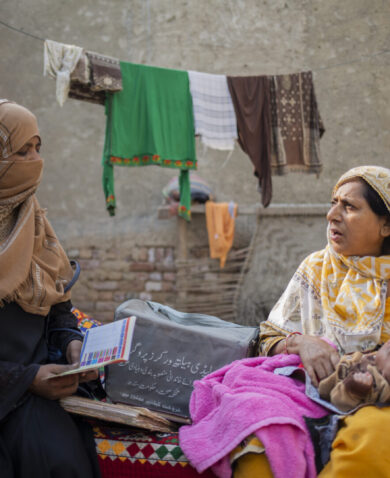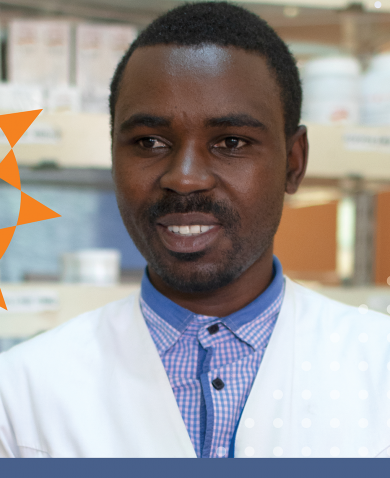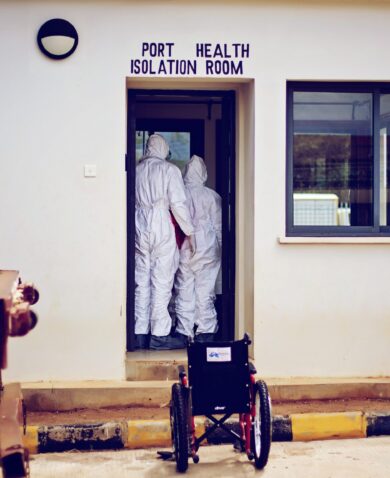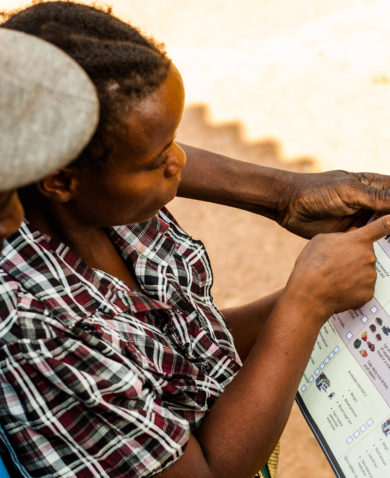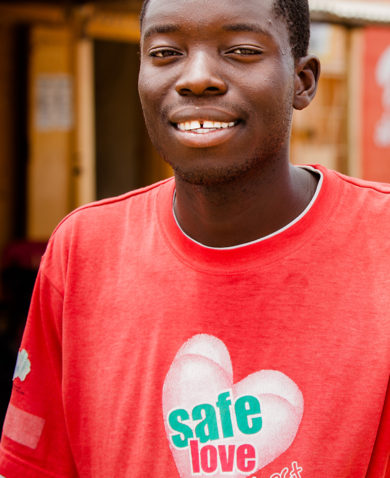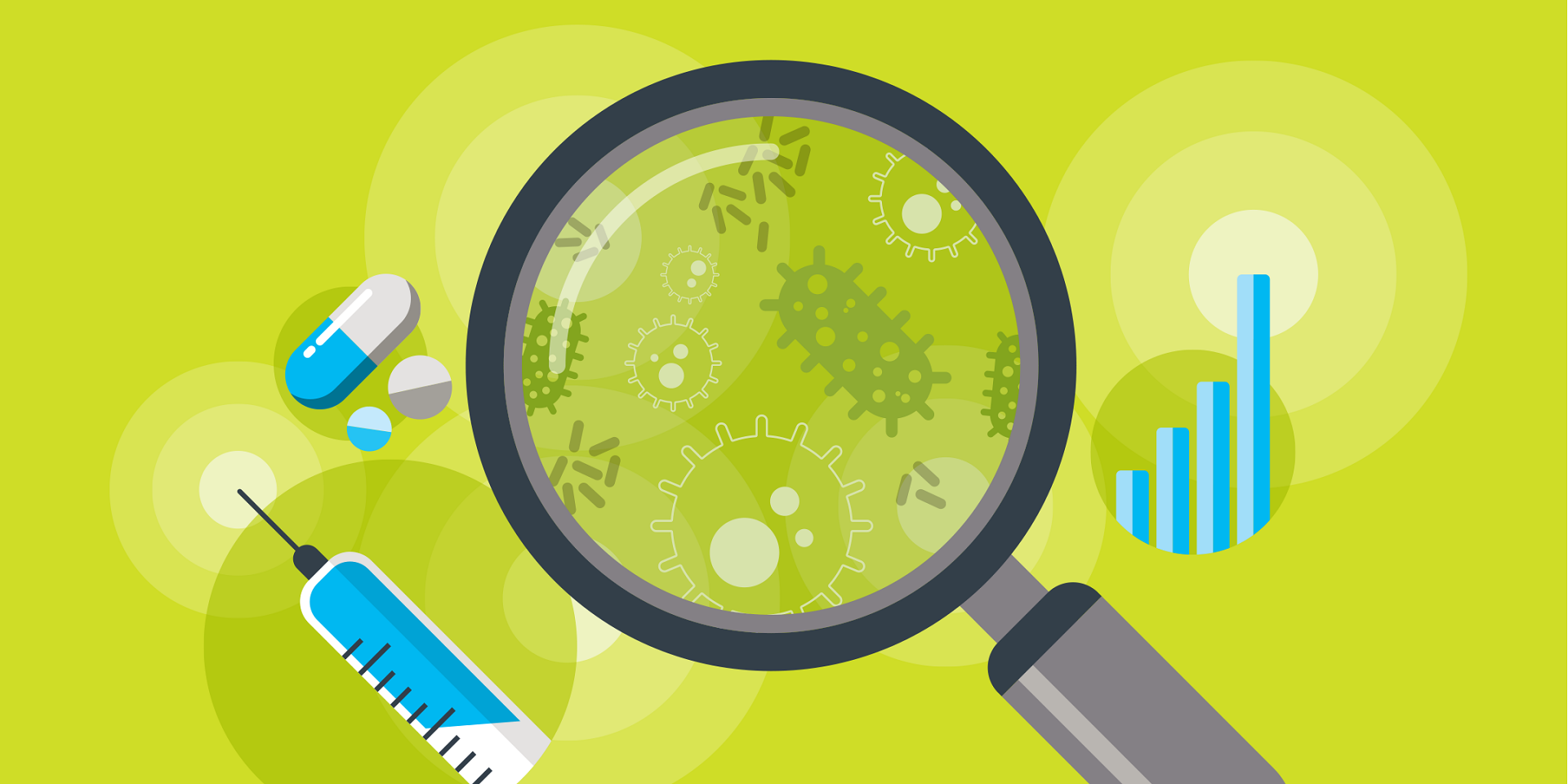
To Squash Superbugs, Look to Behavior Change
January 28, 2020 | 4 Minute ReadThe misuse of antimicrobials is driving the rise of drug resistant pathogens. How can social and behavior change techniques compel individuals to use these life-saving drugs responsibly?
In Alexander Fleming’s 1945 Nobel Prize acceptance speech, in honor of his discovery of penicillin, he included a cautionary tale of a young man who was plagued by a sore throat and cough during a leisurely walk home after a long day’s work. The man in Fleming’s story passes a local pharmacy and purchases antibiotics. Ignoring medical best practice, he takes the antibiotics only until they help him feel better. And then he stops.
From the outset of his discovery, Fleming understood the power and risk of his revolutionary antibiotic and accurately predicted the central role of individual human behavior in the threat of antimicrobial resistance (AMR).
Historically, efforts to counter AMR have spent significant time and money on educating suppliers, subscribers, and end users about their roles in slowing down resistance. It is now broadly acknowledged that setting guidelines and raising awareness is necessary but ultimately insufficient to change behavior at the speed and scale that the AMR crisis requires.
Social and behavior change (SBC) research techniques provide the tools to identify the determinants of individual actions that drive AMR, and an arsenal of communications tactics that can convince multifaceted users and subscribers of antimicrobials to alter their practices and reduce the speed of drug resistance.
The Evolving Problem
Across the world, poor stewardship of antibiotics has caused lifesaving medicines to lose the battle against pathogens. AMR refers to when pathogens — bacteria, fungi, parasites, and viruses — mutate to a degree in which antimicrobials, such as antibiotics and antiretrovirals, no longer kill or control them. These mutations give rise to superbugs, which are more difficult, and in some cases impossible, to treat and pose a serious risk to human, animal, and environmental health.
Today, we are seeing a rise in antibiotic-resistant E. coli, tuberculosis, malaria, and HIV. These resistant pathogens are a global health security risk, causing prolonged disease and disability and increasing the financial cost of healthcare in humans. AMR in animals and the environment leads to diminished yields in the livestock industry, impacting livelihoods. Antibiotic residue from animal products, human waste, and antibiotic-treated crops further spreads resistant pathogens into the soil and surface water.
Although AMR occurs naturally over time, imprudent behavior of suppliers, subscribers, and users of antimicrobials is accelerating resistance. Since the late 1970s, multilateral organizations and national governments have routinely convened to take action against AMR.
To date, investments in countering AMR have largely focused on implementing monitoring systems, government policies, and subscriber regulations needed to curb resistance. In contrast, little funding is dedicated to investigating the motives and beliefs that drive antimicrobial misuse and translating this research into appropriate health systems restructures and targeted communication campaigns.
The lack of inclusion of social and behavior change research and communications interventions in AMR-related development investments has been noted by multiple research publications as a shortcoming of AMR programs. Given that misuse of antibiotics in humans and animals is one of the main drivers of antimicrobial resistance, it is imperative that future overseas development assistance is directed towards human-centred redesigns of health systems and SBC solutions that address entrenched norms and practices.
Science, Behavior and Funding
Nations worldwide have implemented policies to curb behaviors, such as overprescribing, improper handwashing, and stopping antibiotic treatment early, which all lead to the development of superbugs. These checks and balances are vital to preventing AMR but are insufficient when up against human behavior.
Humans are not solely governed by formal regulations. The conduct of medical professionals, veterinarians, pharmacists, farmers, and patients are, in large part, governed by social, cultural, and financial factors. Resource-constrained clinicians may prescribe broad-spectrum antibiotics instead of using diagnostic tools to determine and target pathogens. Farmers may use an antibiotic-enriched feed to promote animal growth and improve yields. Research in India found that doctors prescribed medicine to alleviate perceived symptoms, and pharmacists were motivated by business pressures to prescribe antibiotics.
Communications must compel individuals to align their behavior with medical best practice. This step change cannot be achieved with loosely enforced policy frameworks or abstract, apocalyptic statistics alone. Drivers of human behavior need to be at the core of programmatic decisions.
There is also a need to ensure that suppliers, subscribers, and users have viable alternatives to antimicrobial products. It’s neither fair nor realistic to expect some of the world’s poorest people to factor imagined scenarios, the risk of AMR, into decisions that affect their daily lives, such as their ability to raise animals. In Kenya, cows are often kept in dirty barns. Livestock kept in such conditions are more susceptible to diseases. Supporting farmers to improve animal housing and hygiene, nutrition, and routine vaccination can keep animals healthy and reduce antibiotic usage and resistance.
It is encouraging to see some key global AMR actors taking heed of this gap and making efforts to bring attention and solutions to the forefront. In 2017 and 2018, The World Health Organization (WHO) hosted technical consultation meetings on AMR and behavior change. The research group AMR Funders Forum has included behavior as a key theme under their “Tackling AMR Initiative.”
DFID and USAID are supporting concrete efforts in this space. For USAID’s Global Health Supply Chain-Procurement and Supply Management (GHSC-PSM) project, Chemonics is working with the Ethiopian government to produce and disseminate communication materials on AMR and has supported the training of 100 journalists to improve reporting on the rational use of medicines. DFID will be launching a new research consortium in 2020, focused on understanding and addressing the behaviors of male TB patients, led by the Liverpool School of Tropical Medicine. These interventions and others should be heralded and used to encourage more support to this underrepresented theme in AMR interventions in years to come.
Establishing New Norms
At the 2016 G7 summit in Ise-Shima, global leaders committed to “recognize the importance of social and behavioral sciences for addressing key aspects of AMR.” Now is an opportune time to actualize this commitment. With the Global Health Security Agenda recommitting to taking action against AMR, the release of the United Kingdom’s five-year national plan on AMR and flagship global AMR programs like the Fleming Fund nearing its initial conclusion in 2021, there is an opportunity to build on the progress to date and design interventions that are guided by SBC theories.
SBC interventions and the behavior change theories that guide them start by discovering why people behave the way they do. By using SBC methods in AMR interventions we can create targeted reform and communications activities that inspire, educate, and empower the subscribers and users of antibiotics to use antimicrobials responsibly. Whether it’s farmers worrying about the health of their herds or the young man in Fleming’s story, we must refocus our efforts on understanding why people diverge from safe antimicrobial usage and develop effective solutions to persuade and enable them to align with responsible practices.
In partnership with The Economist Intelligence Unit, Chemonics International will host a panel discussion that explores this important topic. Join us at the Changing Behaviour to Prevent the Rise of Superbugs event at the Wellcome Collection in London to hear from researchers and implementers operating across human and animal health domains.
Posts on the blog represent the views of the authors and do not necessarily represent the views of Chemonics.












